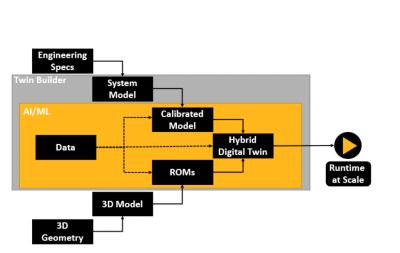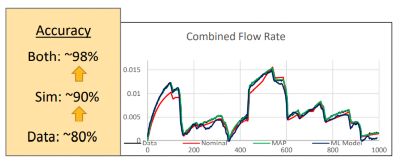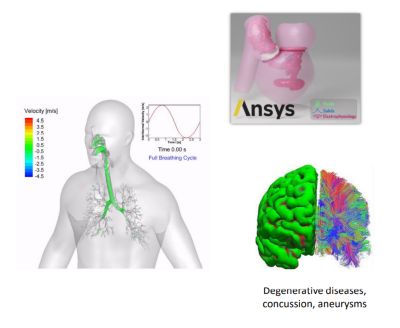-
-
Accédez au logiciel étudiant gratuit
Ansys donne les moyens à la prochaine génération d'ingénieurs
Les étudiants ont accès gratuitement à un logiciel de simulation de classe mondiale.
-
Connectez-vous avec Ansys maintenant !
Concevez votre avenir
Connectez-vous à Ansys pour découvrir comment la simulation peut alimenter votre prochaine percée.
Pays et régions
Espace client
Support
Communautés partenaires
Contacter le service commercial
Pour les États-Unis et le Canada
S'inscrire
Essais gratuits
Produits & Services
Apprendre
À propos d'Ansys
Back
Produits & Services
Back
Apprendre
Ansys donne les moyens à la prochaine génération d'ingénieurs
Les étudiants ont accès gratuitement à un logiciel de simulation de classe mondiale.
Back
À propos d'Ansys
Concevez votre avenir
Connectez-vous à Ansys pour découvrir comment la simulation peut alimenter votre prochaine percée.
Espace client
Support
Communautés partenaires
Contacter le service commercial
Pour les États-Unis et le Canada
S'inscrire
Essais gratuits
ANSYS BLOG
November 10, 2021
Pillars of Innovation: Ansys CTO Talks Digital Twins, Vertical Health Care, and More at IEEE
Members of the IEEE got an in-depth look at how the latest advances in Ansys’ simulation solutions can enhance product innovation at their annual Electronic Design Process Symposium, held virtually November 4-5. As the world’s largest technical professional organization, IEEE’s two-day conference welcomed panelists and attendees from major companies, including Ansys, Amazon Web Services, Inc. (AWS), and Intel.
Leading its second day of panels, Prith Banerjee, Chief Technology Officer at Ansys, delivered a keynote presentation that featured Ansys’ long-term strategies to enable simulation-based product innovation across industries.
Ansys Delves Into 12
Structured around 12 pillars, Banerjee walked members through Ansys’ multilayered approach to innovation, which includes a dozen fundamental areas.
- Numerical methods
- Artificial intelligence/machine learning (AI/ML)
- Digital twins
- Meshing/geometry
- High-performance computing (HPC)
- Integrated computational materials engineering (ICME) and additive manufacturing
- Visualization and user experience/user interface (UX/UI)
- Cloud
- Solutions (e.g., autonomy, electrification, 5G)
- Platforms/workflows
- Model-based systems engineering (MBSE)
- New vertical health care
While each area is critical to advancing simulation-based product innovation, as COVID-19 continues to impact the world around us and emerging variants add to the concern, two areas Banerjee highlighted were digital twins and vertical healthcare.
Digital Twins: It Takes Two, or Three
A digital twin is a virtual representation of real-world entities and processes, synchronized at a specified frequency and fidelity, according to the Digital Twin Consortium. In creating digital twins, engineers generally take a data-driven approach or a physics-based simulation approach. Today, with Ansys Twin Builder and AI/ML integration, engineers can merge data and physics to create the best possible twin: the hybrid digital twin.

Fig. 1. Diagram shows integration of artificial intelligence/machine learning and Ansys Twin Builder
“The AI/ML area is just getting started, there are novel algorithms coming out all the time,” says Banerjee. “We are always watching the latest, newer methods and tracking what is happening in the AI/ML community and applying it to simulation.”
Data-driven models alone can provide roughly 80% accuracy, while simulation-based models increase that number to 90%. But combining the two methods — what Banerjee describes as having the best of both worlds — produces nearly 98% accuracy results.

Fig. 2. Chart depicts the accuracy flow rate of combining data-driven modeling with simulation-based modeling
Additionally, Twin Builder solver technology has been validated through decades of industrial use for multidomain system simulation. Further, the multi-technology platform pairs with Ansys’ physics-based simulation technology to transport the detail of 3D simulations — for example, leveraging structural, fluids, electromagnetics, or semiconductor products to model mechanical assemblies — as reduced-order models (ROMs) into the system framework to produce accurate and more efficient system-level models.
Health Care on the Horizon
By leveraging digital twins and AI, Ansys is advancing toward a new vertical health care approach through a six-phase plan, which begins, of course, by building and strengthening collaborations with academic and clinical partners. Next, Banerjee describes a digital transformation in which health care modeling tasks are simplified and integrated into digital workflows, taking advantage of simulation solutions such as Twin Builder. Building on these multiphysics models, patient-specific virtual organs can be deployed as design platforms.
While the first three stages have been implemented in a number of academic and clinical settings, the latter three phases will require a widespread adoption of such innovation.

Fig. 3. Illustration shows virtual organs and simulation combining fluids, solids, and electrophysiology multiphysics data
As a fourth phase, the primary objective is to reduce, refine, and replace clinical trials with faster, cheaper, and safer in silico clinical trials, i.e., simulation or computational modeling. Once this becomes routine, or at least more widely received, the next mark is to deploy and apply patient-specific models to billions of annual surgical and medical procedures through accessible, easy-to-use clinical applications. The final phase — and ultimate goal — is to achieve this level of widespread adoption and fully integrate patient-specific digital twins, or personal digital avatars (PDAs), into the mainstream to prevent diseases.
To learn how professors and doctors in France are implementing simulation into their practices, head to Take Heart: Personal Digital Avatar Dramatically Improves Aortic Surgery Outcomes.